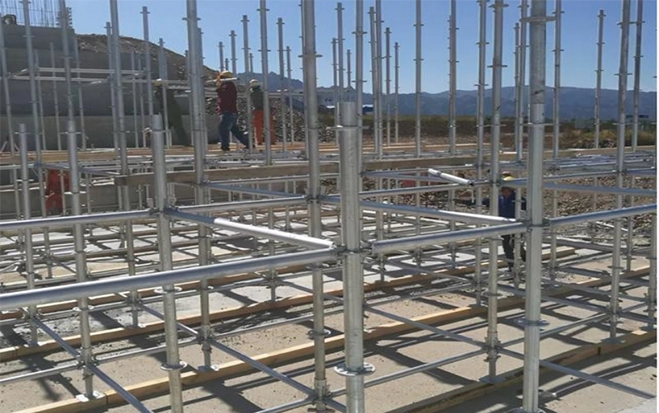In the ever-evolving construction industry, the choice of scaffolding system plays a pivotal role in determining the efficiency, safety, and success of a project. As a leading ringlock scaffolding manufacturer, Taishenglan is at the forefront of providing innovative scaffolding solutions. This article delves into the distinctions between ringlock scaffolding systems and traditional scaffolding methods, highlighting the advantages and considerations of each to help you make an informed decision for your next project.
Ringlock scaffolding, a modular system, is renowned for its versatility, durability, and ease of assembly. Characterized by its ring-shaped rosettes at intervals along a vertical post, it allows for the quick and secure connection of horizontal and diagonal braces. The scaffolding ringlock system is designed to meet the demands of various construction environments, from simple residential projects to complex industrial structures.
Traditional scaffolding systems, such as tube and coupler or frame and brace scaffolds, have been the backbone of construction projects for decades. These systems rely on manual assembly of individual components, requiring skilled labor and significant time investment. While they offer flexibility and adaptability, their complexity and labor-intensive nature often result in longer setup and dismantling times.
Ringlock scaffolding offers a significant advantage in terms of assembly and disassembly speed. Its modular design allows for rapid setup, reducing labor costs and project timelines. In contrast, traditional scaffolding systems, with their numerous individual parts, require more time and skilled labor to erect safely.
The ringlock scaffolding system is engineered for superior safety and stability. Its integrated locking mechanism minimizes human error during assembly, ensuring a secure structure. Traditional systems, while robust, depend heavily on the correct installation of couplers and braces, which can vary in quality and condition.
One of the standout features of scaffolding ringlock systems is their unparalleled versatility. The system can easily adapt to complex geometries and uneven terrains, making it suitable for a wide range of applications. Traditional scaffolding, though adaptable, often struggles with irregular shapes and surfaces, requiring additional components and customization.
Initially, the investment in ringlock scaffolding may be higher than traditional systems due to the advanced engineering and high-quality materials. However, the reduced labor costs, faster project completion times, and longevity of the system often result in lower overall costs in the long term. Traditional scaffolding, with its lower upfront cost, may seem economical but can incur higher operational costs over time.
Choosing between ringlock scaffolding and traditional scaffolding systems depends on the specific requirements of your project, including budget, timeline, and complexity. As a leading ringlock scaffolding manufacturer, Taishenglan is committed to providing top-tier scaffolding solutions that enhance efficiency, safety, and productivity on construction sites. The scaffolding ringlock system represents a significant advancement in scaffolding technology, offering a compelling alternative to traditional methods for forward-thinking construction professionals.




